You are using an out of date browser. It may not display this or other websites correctly.
You should upgrade or use an alternative browser.
You should upgrade or use an alternative browser.
شناسایی Centipedes, Millipedes and Woodlice
- شروع کننده موضوع afsoon6282
- تاریخ شروع
Centipedes (Chilopoda)
Centipedes (Chilopoda)
Centipedes (Chilopoda)
Centipedes (Chilopoda)
Centipedes look like millipedes and they both belong to the Myriapedes. Myriapedes means "unable to count the number of feet" or "countless number of feet". Both groups have a lot of legs indeed. They all have slender, rather long bodies, which are made up of many segments. And each segment has its own legs! Still there are many differences between the two groups. Centipedes have one pair of legs on each segment, are skillful runners, are carnivores and use poison to paralyze prey. The bite of some of the larger species can be dangerous for larger animals, even for humans. These dangerous species do not live in Northern and Central Europe. Centipedes can be found under stones and logs. Unfortunately the two photographs below are of rather poor quality.
The Stone Centipede (Lithobius microps) to the left is a faster runner than the much longer Ground Lover Centipede (Haplophilus subterraneus) to the right.


Centipedes look like millipedes and they both belong to the Myriapedes. Myriapedes means "unable to count the number of feet" or "countless number of feet". Both groups have a lot of legs indeed. They all have slender, rather long bodies, which are made up of many segments. And each segment has its own legs! Still there are many differences between the two groups. Centipedes have one pair of legs on each segment, are skillful runners, are carnivores and use poison to paralyze prey. The bite of some of the larger species can be dangerous for larger animals, even for humans. These dangerous species do not live in Northern and Central Europe. Centipedes can be found under stones and logs. Unfortunately the two photographs below are of rather poor quality.
The Stone Centipede (Lithobius microps) to the left is a faster runner than the much longer Ground Lover Centipede (Haplophilus subterraneus) to the right.


The centipede below is similar to the Garden Centipede, but it is much longer. The Garden Centipede has 15 pairs of legs, this species possesses 21 pairs. However it has no eyes. The colour of both species is identical and they are both fast runners. Cryptops hortensis belongs to a Centipede family which also is comprised of the biggest species, such as Scolopendra gigantea, a fierce creature reaching some 12", which eats mice, small birds and toads. The species we find in our garden however never gets any longer than about 1.1". After hatching the young are taken care of by their mom for some time. These young are already born with all their feet. The Garden Centipede starts off with less legs than the 15 it has eventually and adds a pair of legs with every skin change. Even though the species below does appear in woodlands, it is mostly found in gardens. It is very common in England and Wales, but much scarcer in Scotland.
This Cryptops hortensis is very common in English and Welsh gardens.

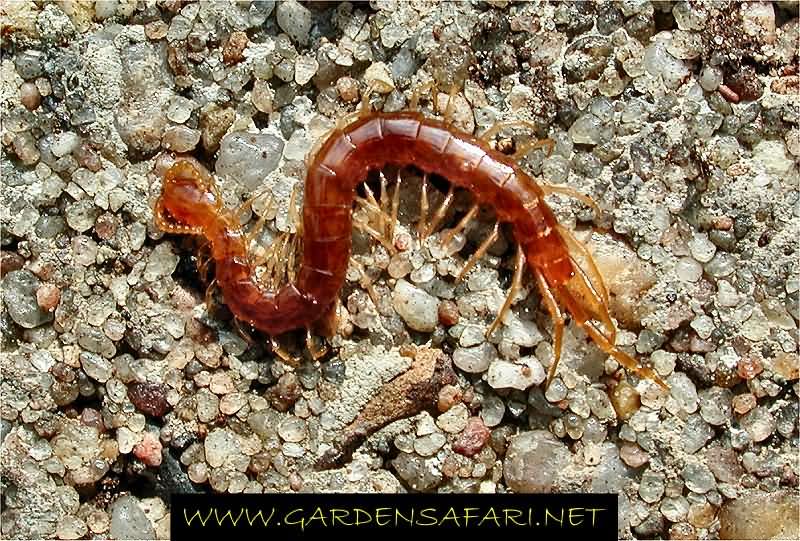
This Cryptops hortensis is very common in English and Welsh gardens.


Millipedes (Diplopoda)
Millipedes (Diplopoda)
Millipedes (Diplopoda)
Millipedes (Diplopoda)
Millipedes have plenty of legs although they never reach a thousand as the name might suggest. Some species may have up to a 130 pairs and that means they have no less than 260 legs! Having so many legs means that you have to walk carefully in order not to trip over your own feet. The reason millipedes are slow walkers is that each body segment has two pairs of legs that do not move simultaneously. Just try to imagine how it works and you'll know why it's impossible to run quickly in that way. Millipedes eat plants and decaying materials and have no poison. Some species spray a badly smelling substance around to get rid of enemies. Many millipedes curl up when threatened. A very common species in gardens is Schizophyllum sabulosum below. It has a light double line close to the center of the back. These lines maybe yellow or red. You could also say the back is yellowish with a small black line right on top of it. It likes climbing up trees and bushes and is regularly found on walls or fences.
Schizophyllum sabulosum is a common species in gardens, usually it can be spotted climbing up walls and fences.


Millipedes have plenty of legs although they never reach a thousand as the name might suggest. Some species may have up to a 130 pairs and that means they have no less than 260 legs! Having so many legs means that you have to walk carefully in order not to trip over your own feet. The reason millipedes are slow walkers is that each body segment has two pairs of legs that do not move simultaneously. Just try to imagine how it works and you'll know why it's impossible to run quickly in that way. Millipedes eat plants and decaying materials and have no poison. Some species spray a badly smelling substance around to get rid of enemies. Many millipedes curl up when threatened. A very common species in gardens is Schizophyllum sabulosum below. It has a light double line close to the center of the back. These lines maybe yellow or red. You could also say the back is yellowish with a small black line right on top of it. It likes climbing up trees and bushes and is regularly found on walls or fences.
Schizophyllum sabulosum is a common species in gardens, usually it can be spotted climbing up walls and fences.


Most other millipedes are very difficult to identify because they resemble one another so much. Below to the left Cylindroiulus punctatus, a slowly moving species, which is clearly puntuated just like its scientific name suggests. This species is seen in gardens sometimes, but it actually prefers woods. It is not uncommon in Britain. Many species roll thir bodies up when feeling threatened, like the one below to the right. It is one of the Julus species and it is probably Julus scandinavius. Some Julus species are very common in gardens. They are however difficult to identify.
The Blunt-tailed Snake Millipede (Cylindroiulus punctatus) to the left has some 200 legs and still cannot run very fast! To the right a similar species, which could be Julus scandinavius, but this is not certain at all.


The Blunt-tailed Snake Millipede (Cylindroiulus punctatus) to the left has some 200 legs and still cannot run very fast! To the right a similar species, which could be Julus scandinavius, but this is not certain at all.


Millipedes do not eat just dead plants. Some species eat living ones as well and by doing so can become a pest. The Spotted Snake Millipede below is such a pest. The species can do a lot of damage in potato fields.
The Spotted Snake Millipede (Blaniulus guttulatus) is quite beautiful. By the way in the picture to the left there is another species is visible: the Common Snake Millipede (Proteroiulus fuscus). It is shorter, thicker and darker.
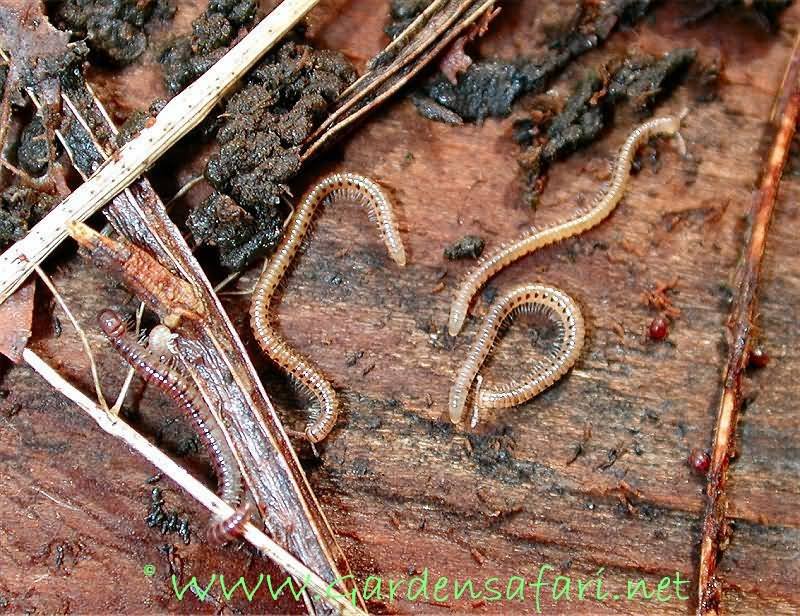
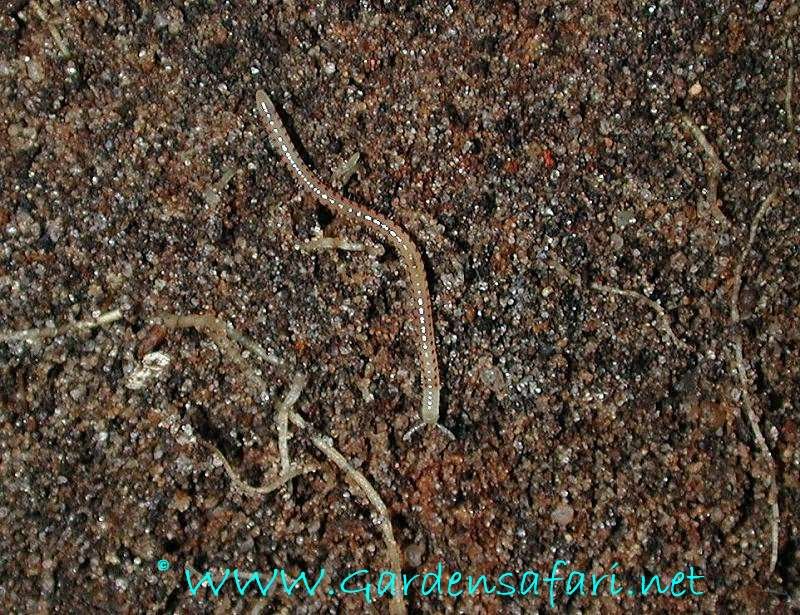
The Spotted Snake Millipede (Blaniulus guttulatus) is quite beautiful. By the way in the picture to the left there is another species is visible: the Common Snake Millipede (Proteroiulus fuscus). It is shorter, thicker and darker.


As the following close ups show, some millipedes look like prehistoric monsters. The species depicted can be found hibernating until deep in April. It is very difficult to wake it up. The other millipede species you can see on this page awake much earlier in spring. The white millipede in the picture below actually the same species that has just shed its skin.
This millipede, the Flat-backed Millipede (Polydesmus angustus), is in hibernation for a long time
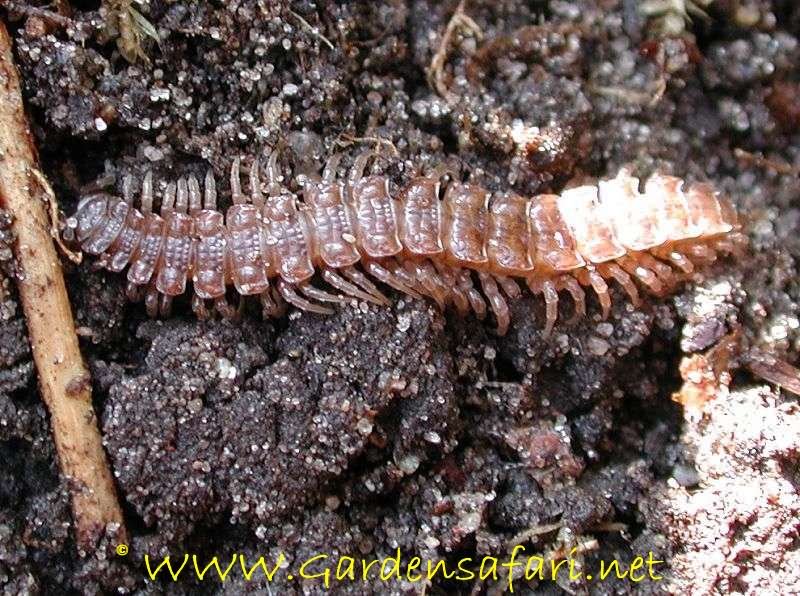
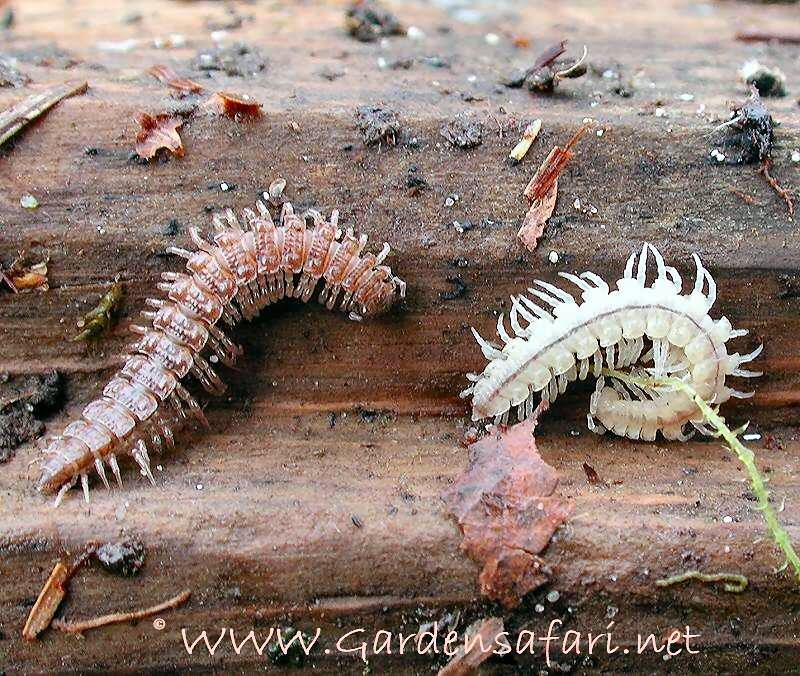
This millipede, the Flat-backed Millipede (Polydesmus angustus), is in hibernation for a long time


Woodlice (Isopoda)
Woodlice (Isopoda)
Woodlice (Isopoda)
Woodlice (Isopoda)
Just like insects, harvestmen and spiders, woodlice are arthropods. They have 7 pairs of legs and they are related to crustaceans that live in the water. Woodlice have adapted themselves to living on land, but they can only survive in moist places. That's why they are active during the night when there is no danger of the sun drying them out. Nevertheless they are easy to find - just peek under old logs and stones and you will definitely find them. They are very common everywhere. In the USA Woodlice are often called Pillbugs.
This is the most common woodlouse in the Benelux, the Common Shiny Woodlouse (Oniscus asellus), also known as Smooth Woodlouse.
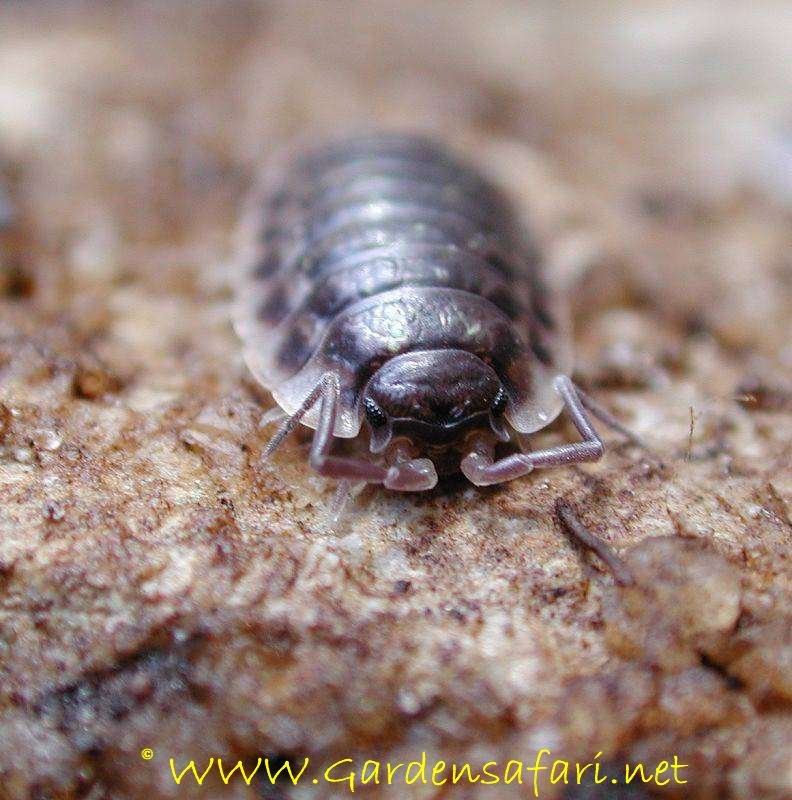
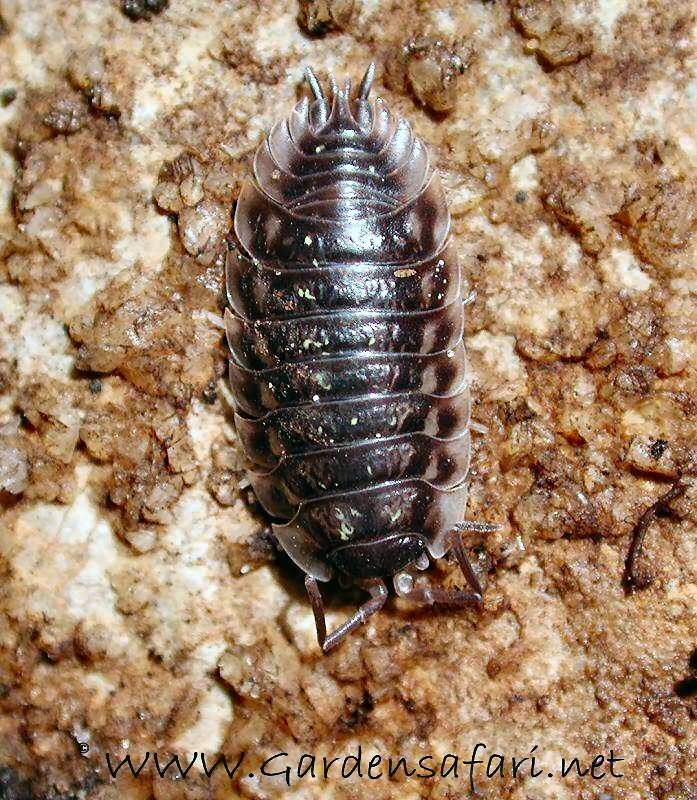
Just like insects, harvestmen and spiders, woodlice are arthropods. They have 7 pairs of legs and they are related to crustaceans that live in the water. Woodlice have adapted themselves to living on land, but they can only survive in moist places. That's why they are active during the night when there is no danger of the sun drying them out. Nevertheless they are easy to find - just peek under old logs and stones and you will definitely find them. They are very common everywhere. In the USA Woodlice are often called Pillbugs.
This is the most common woodlouse in the Benelux, the Common Shiny Woodlouse (Oniscus asellus), also known as Smooth Woodlouse.


The species below often accompanies the Common Shiny Woodlouse and actually is as common. It is not shiny however and has little bumps on the skeleton. For this reason it is called the Common Rough Woodlouse. Usually it is dark gray all over but sometimes it shows other colours, such as yellow, red, green and blue. When it does, it's often suffering from an endoparasite, usually a virus. Like the other species, the Common Rough Woodlouse eats all kinds of decaying organic materials.
Another common and highly familiar species is the Common Rough Woodlouse (Porcellio scaber)
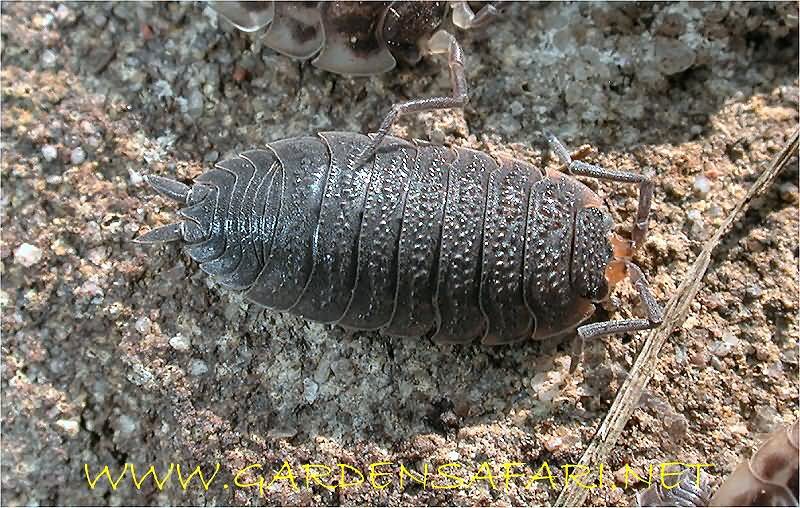
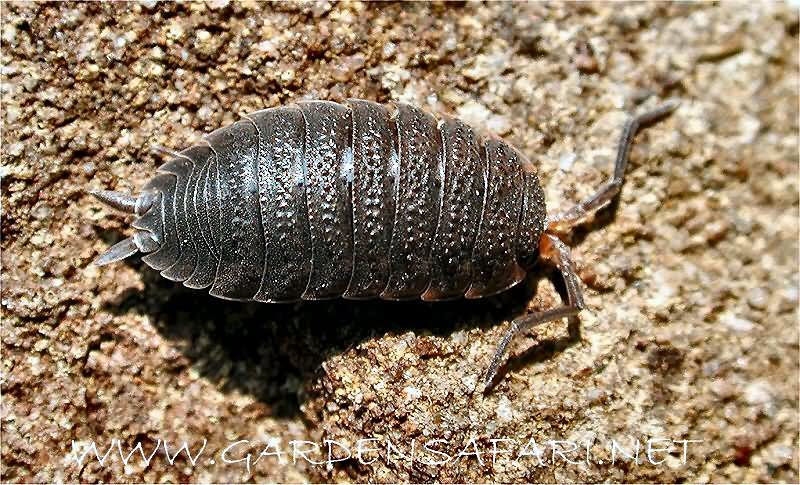
Another common and highly familiar species is the Common Rough Woodlouse (Porcellio scaber)


Woodlice have been roaming on the earth for millions of years and haven't evolved much ever since. They actually even look like fossils! Woodlouse gets oxygen by means of gills. These gills are located on the last pair of legs and must be kept moist constantly. Mother Woodlouse keeps the eggs in a kind of pouch on her belly. She even looks after the young for a short period of time after hatching. The Common Shiny Woodlouse is also simply known as the Common Woodlouse. In the picture below to your left there are two species: the one in the middle is not a Common Woodlouse, but yet another Common Rough Woodlouse.
The Common Shiny Woodlouse is normally grey, but quite often shows coloured patches. The brown woodlouse in the left picture is a Common Rough Woodlouse.
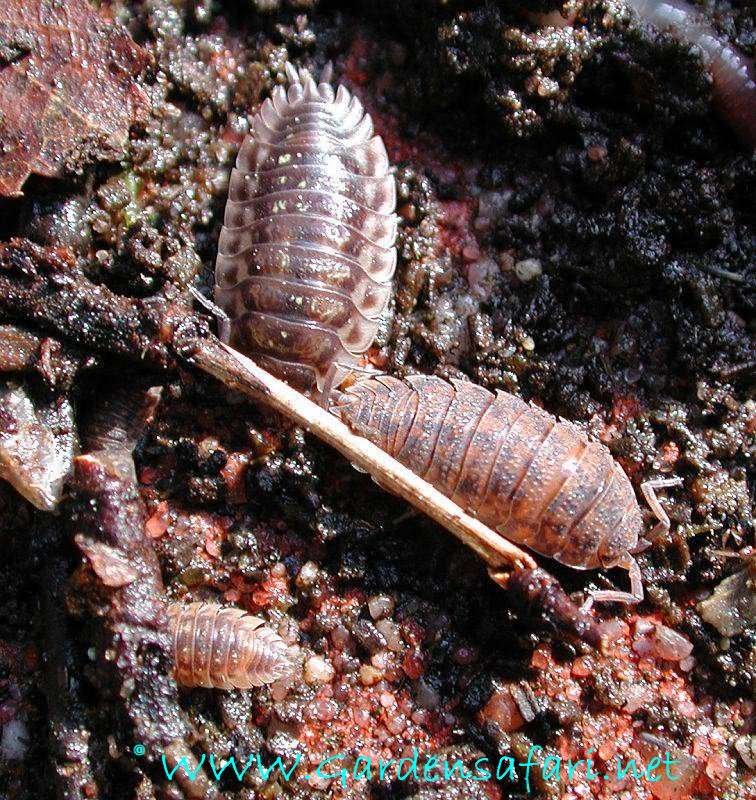
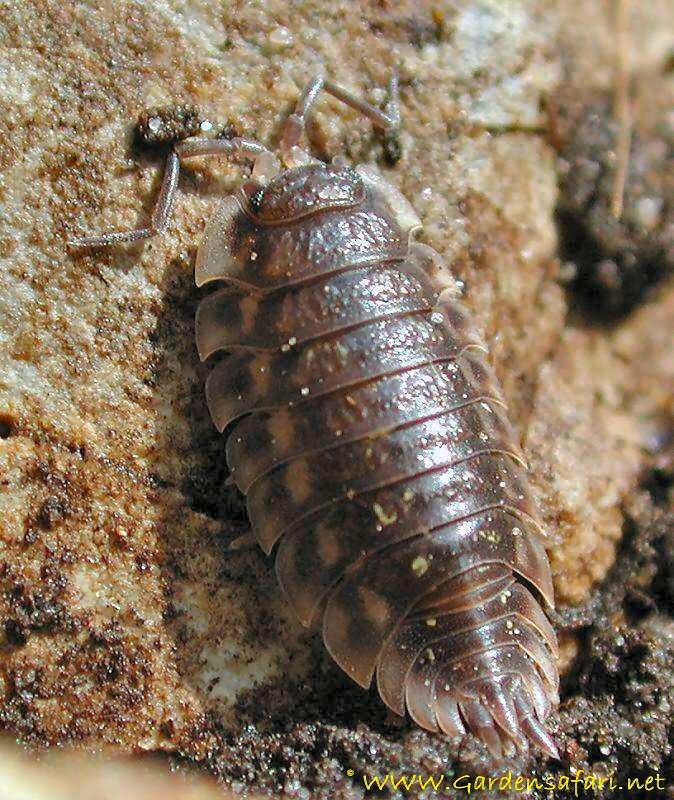
The Common Shiny Woodlouse is normally grey, but quite often shows coloured patches. The brown woodlouse in the left picture is a Common Rough Woodlouse.


The Common Striped Woodlouse is not near houses or in cellars but it can be found in larger gardens, woodlands etc. It lives among fallen leaves, mosses etc. Both the Dutch and Latin names refer to the animal as Moss Woodlouse. The two species look like each other very much except for the dark head and the clear line on the back of the Striped Woodlouse. The latter is extremely variable and comes in yellow, red and even green colour shades. The two species live in quite similar ways.
The Common Striped Woodlouse (Philoscia muscorum) is a more vividly marked woodlouse.
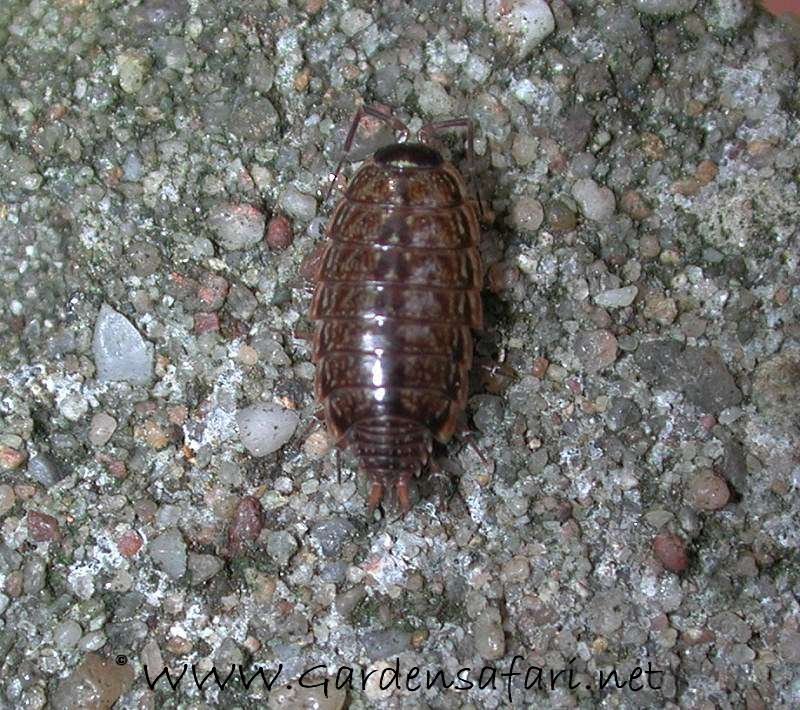
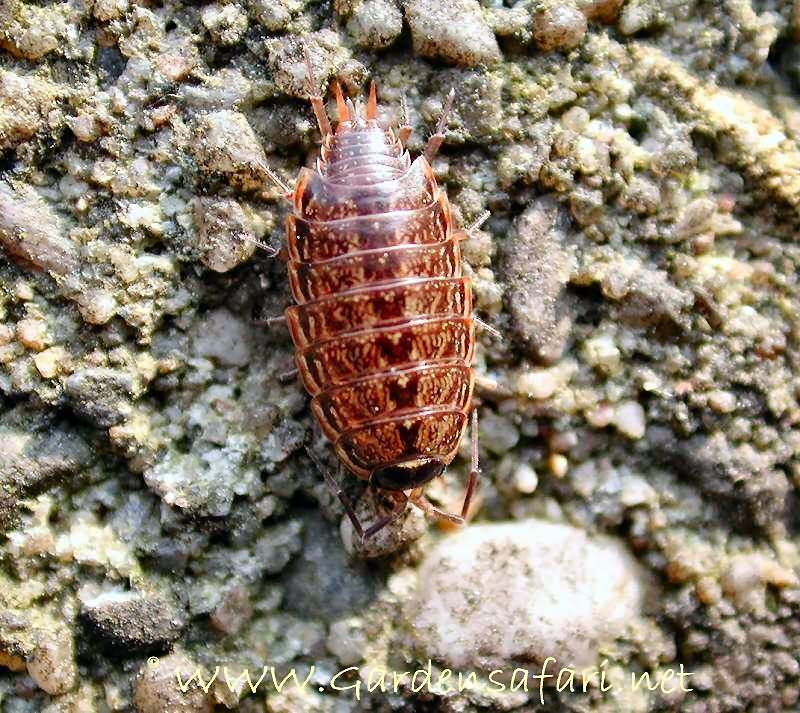
The Common Striped Woodlouse (Philoscia muscorum) is a more vividly marked woodlouse.


This is an example of how variable the Common Striped Woodlouse can be. The one below is very beautiful indeed. The Striped Woodlouse often can be identified by the fact that it is a fast runner (much faster than the other common woodlice). Turning over stoned and logs in very early spring is a trick to get a good glimpse of them as they are often too cold then to run away!
This Common Striped Woodlice is so colourful that is looks like another species alltogether.
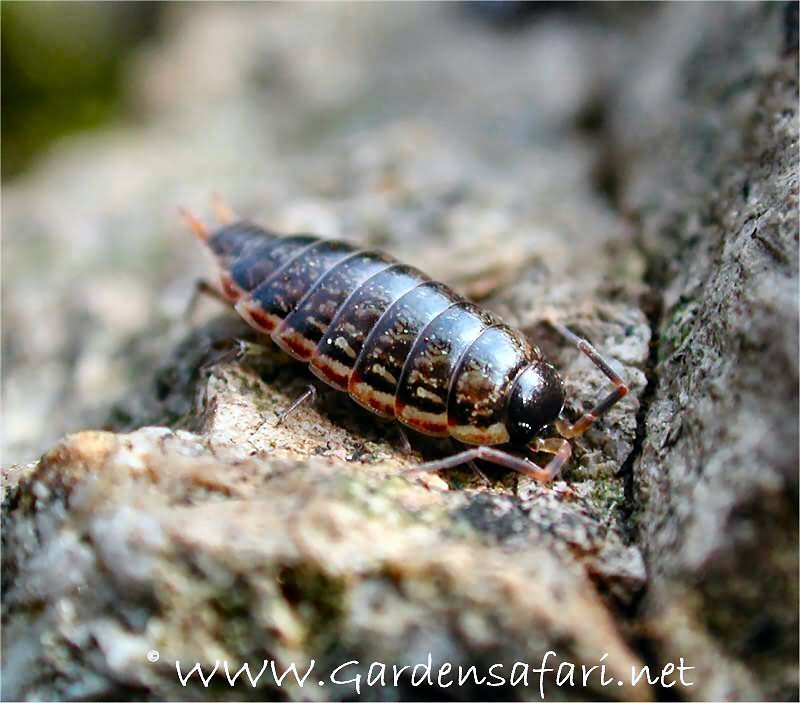
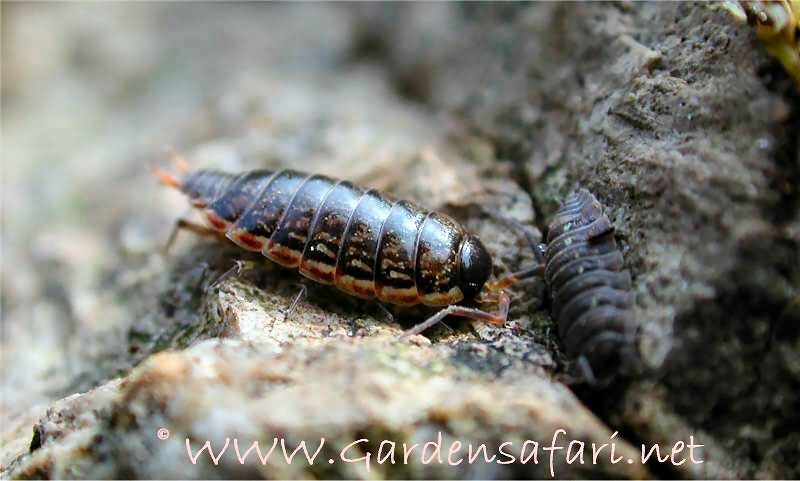
This Common Striped Woodlice is so colourful that is looks like another species alltogether.


Much smaller than the species described above is the white woodlouse below. The animal is less than half a centimeter in length, strikingly white and absolutely blind. It spends its entire life in the nests of ants and is thus called the Ant Woodlouse. Apparently it eats the fungi and rubbish left behind by the ants. More information about this remarkable co-existance you'll find on the Gardensafari Ants Page.
The Ant Woodlouse (Platyarthrus hoffmannseggi) spends most of its life underground.
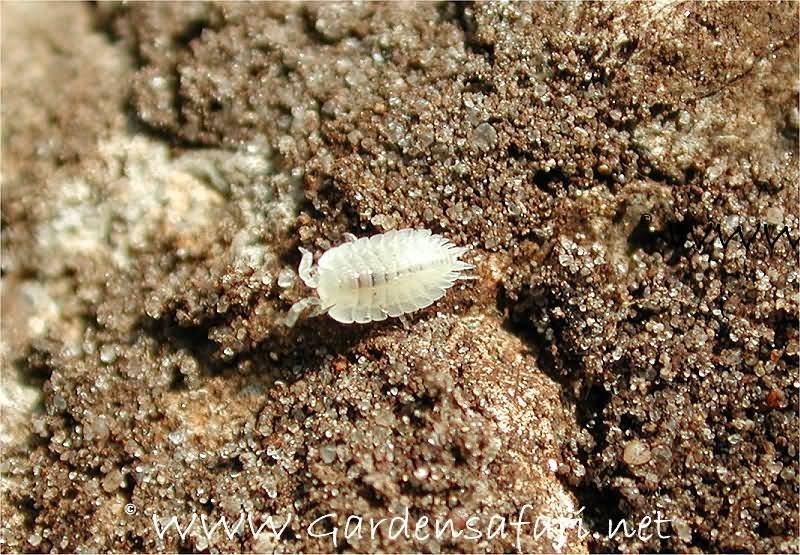
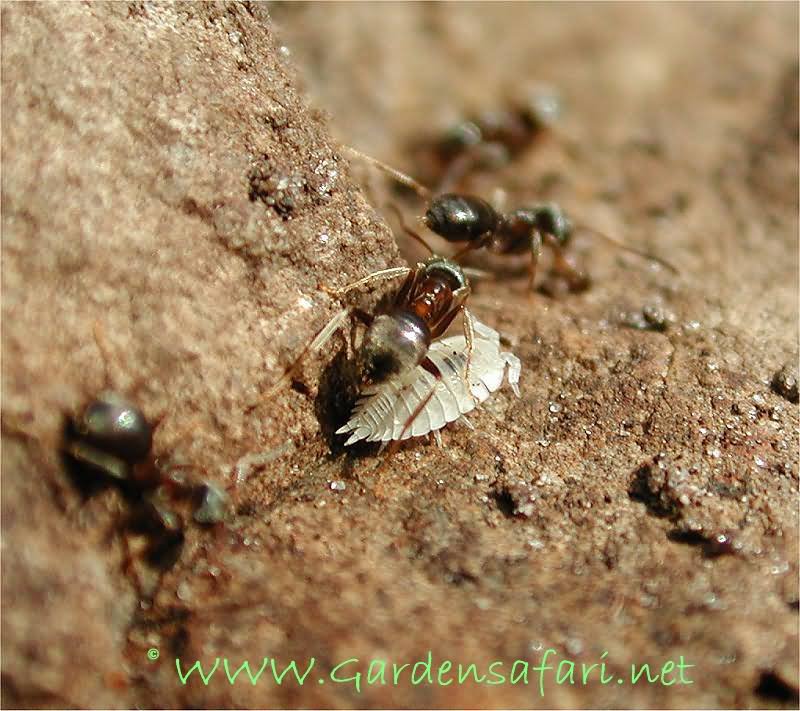
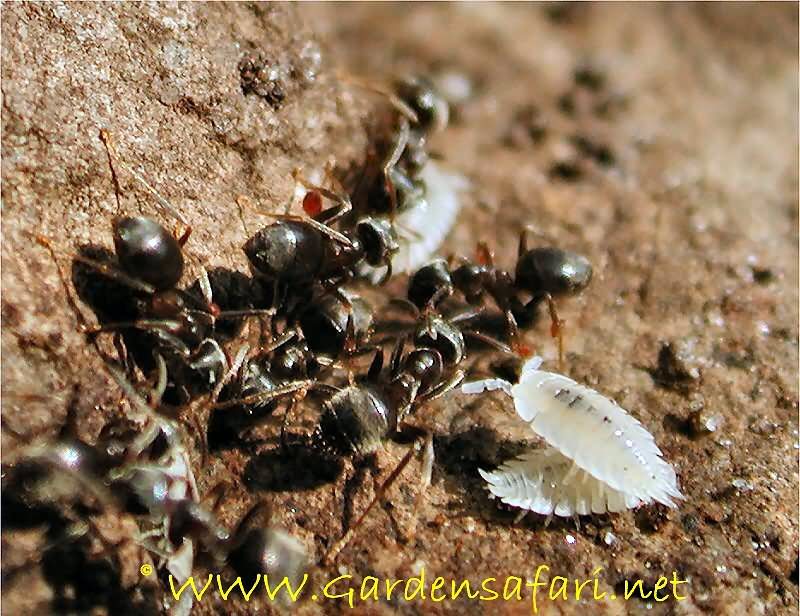
The Ant Woodlouse (Platyarthrus hoffmannseggi) spends most of its life underground.



Similar threads
| Thread starter | عنوان | تالار | پاسخ ها | تاریخ |
|---|---|---|---|---|
|
|
برسی و شناسایی کنه پیاز | آفات و بیماری های گیاهی | 0 | |
|
|
آشنایی با پرورش و شناسایی کفش دوزک کریپتولموس | آفات و بیماری های گیاهی | 1 | |
|
|
شناسایی Spiders and alies | آفات و بیماری های گیاهی | 96 | |
|
|
شناسایی Odonata | آفات و بیماری های گیاهی | 13 | |
|
|
شناسایی Moths | آفات و بیماری های گیاهی | 288 |
Similar threads
-
-
آشنایی با پرورش و شناسایی کفش دوزک کریپتولموس
- شروع شده توسط roze888
- پاسخ ها: 1
-
-
-
